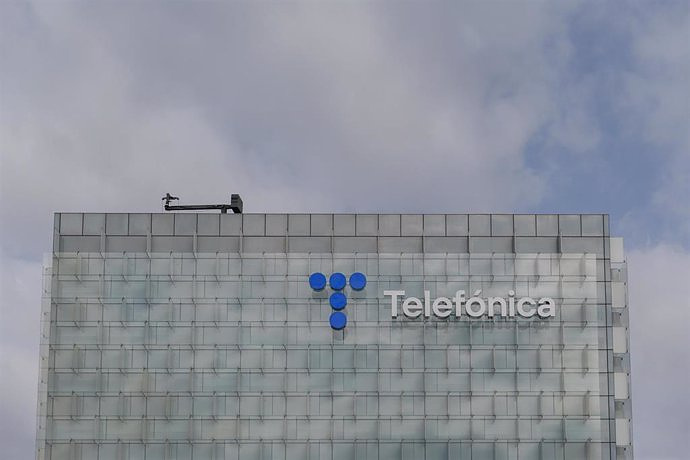The Bitcoin network has since its emergence in January 2009, a long way from Soft and Hard Forks to Protocol upgrades through to the Implementation of Segwit and a future Outlook on the Lightning Network (LN). 18. September 2018 the average block size in the Bitcoin network is 0.8 MB, and the average number of transactions per Block 1609 - in this respect, a new Block with 2 MB, the the 5 provided. September 2018, the Blockchain was added for raised eyebrows.
Bitcoin-Bock 540107 has 2,26 MB. In terms of Megabytes has been added to the never before so large a Block of the Blockchain. Although the bear market lasts for nine months, and could Block 540107 be a sign that the Bitcoin network is developing in technical terms. To understand why, let's take a look at the current Status of the Bitcoin network throw.
Currently, the average block size of the Bitcoin network 0,804 MB and each Block is recorded in the average 1609 transactions - therefore, Block 540107 2.2 MB but is only 230 transactions such anomaly.
The biggest BlockBlock 540107 is the largest Block in the Bitcoin network, mainly due to Segwit, a Soft Fork in the Bitcoin network. This is an Update of the Code, which allows security data for transactions, to be in an extended Block is stored, a storage unit, which is not necessarily associated with a "regular" Block.
An extended Block is its transaction security data - usually (stored in non-Segwit transactions) in a regular Block of the Block with the transaction data separate location. As Segwit on 24. August 2017 has been enabled, not replaced it-Segwit block size limit of 1MB, with a maximum of 4MB. This allowed more transaction can be Packed data in a single Block by the transaction security data in a separate memory unit of the EC. an enlarged Block is to be stored. This Segwit has paved the way for blocks greater than 2MB. If a Block is only filled with "Witness information" (safety data), it could technically be larger than 4MB. So the largest Block 54010 2.26 MB.
But although 54010 is with regard to the mega byte size of the front, it contains only 230 transactions, representing approximately 86 per cent (or precisely 1379) are less transactions than an average Block in the Bitcoin network.
Why is the biggest Block so empty?
This is not the first Time that a large Block has less transactions than the average block of the network. 20. January saw the Bitcoin network for the first time a Block is larger than 2MB, as a Block 505225 appeared 2.17 MB and this is exactly how Block 540107, this Block had a relatively low number of transactions in comparison with the average Block in the Bitcoin network. Block 505225 contains only 225 transactions - about 15 percent less normally.
Although such a low number of transactions in such large blocks may seem surprising, believes an independent crypto-researchers, known as the AltcoinXP-Anthony, that you should make to worry less about the number of transactions in a Block and focus on whether the weight of the block pushes close to its capacity. On the question of why the Block has only 230 transactions, he commented to Cointelegraph:
"you would have to ask the Miner, which has him gemint, - he makes this decision. But I suspect that such transactions have complied with the block weight limit. The number of transactions doesn't mean much. You can have a transaction, the thousands of pieces of BTC dust (small amounts of BTC spread between the addresses) to a single address. The dust takes up more space in the Block [...] more data is needed for each transaction [...] so I want to say that not all transactions are equal, some due to the input [or output], a larger weight/size."
With the Segwit-Soft-Fork a new engineering Parameter called "weight" comes into play. Before Segwit 1MB corresponded to data in the Bitcoin network technically 4 million units of weight - in other words, consider the entire weight capacity of the block. But I Segwit each Byte weighs only a unit of weight, resulting in more data in one Block can be Packed, and why we see blocks that are larger than one or two Megabytes.
Therefore, a transaction can send thousands of "BTC dust grains," transactions in the Bitcoin network were consolidated or grouped, what will describes as Batching. Various transactions in the Bitcoin network will be compressed in a single transaction(unit) with various Outputs, instead of a separate transaction with unique Inputs and Outputs. Batching transactions to reduce the amount of data that is required for different transactions to different addresses; However, the more transactions are grouped together in a Batch, the greater the number of bytes of the transaction.
Batching: Input, various OutputsBitcoin-researcher David A. Harding is a great example of Batching in his article:
"let us imagine that a Bitcoin is equivalent to a Dollar. Alice receives the invoice for 10 BTC and starts a transaction, by adding a 20 BTC Input from your Wallet. Then she adds two Outputs: a 10 BTC Output that goes to Bob, and a further 10 BTC-Output to return the exchange money to your own Wallet."
In this case, the total size of transaction is 226 Bytes, from the Code specified amount, a transaction in the Bitcoin-network. But the example goes:
"But the Moment, Alice has forgotten, to leave tips for excellent Service. With physical Cash, Alice would make a second transaction by exchanging the 10 Dollar they received as change money into smaller coins to a 15% drinking allow money of $ 1.50 on the table and keep the remaining $ 8.50."
But in the Bitcoin network that Alice would have to start a new transaction for the tip, which would also be a 226 Bytes in size. In order for Alice to pay her court and drinking can leave money in the Bitcoin network a total of 453 Bytes in a Block, if this happens in two separate transactions.
But there is a way to merge these two in a single transaction.
With physical Cash could pay Alice her original bill, giving the waiter a $ 20 and asks him to her 8,50 to return and keep the $ 1.50 as a tip. In the Bitcoin network, a number of transactions can be consolidated by an additional Output is added to the original transaction. According to Harding, every additional Output consumed 34 Bytes. When Alice joined your transactions in a Batch (food = Output 1, and tip = Output 2) calls the Bitcoin network 260 Bytes in total, so you can reach your destination - in comparison to the 452 Bytes that would have been incurred in two separate transactions. Similar to Segwit the idea behind Batching is that more block storage is kept free, so that more data - and, hopefully, transactions will fit in the Block.
More participants = more BytesAlthough Batching the required amount of data for multiple transactions reduces drastically, calls for each gebatchte transaction that the Bitcoin network consumes more data to complete the transaction. Even if this amount of data is not nearly as high as if the user were to perform a variety of transactions with several Inputs and Outputs, summed up the Whole still.
Although only 230 transactions in the Block, it is possible that the amount of these transactions was gebatcht, so that an Input has a larger quantity of output; then, the Bitcoin network is larger Byte would have to spend quantities of in order to make the transaction possible - depending on how many Outputs are tied to each Input. But regardless of the amount of transactions that were included in the Block, 540107, is a Block larger than 2MB a good message.
hope for the futureAlthough the markets for crypto currencies for almost nine months of Fighting, could Block 540107 be the proof that a solution to the scalability problem from the Bitcoin progress is being made. For those who preach that Bitcoin will be the money of the future, could usher in a development of this future - a need in the transactions of seven to eight second for processing. Big payment processors can process tens of thousands transactions per second. Visa, for example, processed for 24,000 transactions per second. If Bitcoin is adapted, and as a payment method in society must be used, needs to be addressed, the number of transactions that can be processed in a network.
Some are hopeful that the Lightning Network (LN) will play a significant role in the solution of the scaling question, and although LN need not Segwit, protects the Implementation of Segwit prior to the erroneous transactions in the Lightning channels. Even if the implementation of the Lightning Network may be still in the distance, seems to Block 540107, it should be noted that the Bitcoin network is moving in a direction in which the Lightning Network and other possible scaling solutions can be made a reality.

 Exploring Cardano: Inner Workings and Advantages of this Cryptocurrency
Exploring Cardano: Inner Workings and Advantages of this Cryptocurrency Seville.- Economy.- Innova.- STSA inaugurates its new painting and sealing hangar in San Pablo, for 18 million
Seville.- Economy.- Innova.- STSA inaugurates its new painting and sealing hangar in San Pablo, for 18 million Innova.- More than 300 volunteers join the Andalucía Compromiso Digital network in one month to facilitate access to ICT
Innova.- More than 300 volunteers join the Andalucía Compromiso Digital network in one month to facilitate access to ICT Innova.-AMP.- Ayesa acquires 51% of Sadiel, which will create new technological engineering products and expand markets
Innova.-AMP.- Ayesa acquires 51% of Sadiel, which will create new technological engineering products and expand markets The Ibex 35 signs its best session of the year with an increase of 1.7% and recovers 11,000 points
The Ibex 35 signs its best session of the year with an increase of 1.7% and recovers 11,000 points RELEASE: Applied Intuition and Audi Partner on Unified AD Launch Solution
RELEASE: Applied Intuition and Audi Partner on Unified AD Launch Solution The European Parliament supports the new fiscal rules adapted to the situation by country
The European Parliament supports the new fiscal rules adapted to the situation by country Agreement between the Government and Navarra to protect traffic competition in the community after the annulment of the Supreme Court
Agreement between the Government and Navarra to protect traffic competition in the community after the annulment of the Supreme Court How Blockchain in being used to shape the future
How Blockchain in being used to shape the future Not just BTC and ETH: Here Are Some More Interesting Coins Worth Focusing on
Not just BTC and ETH: Here Are Some More Interesting Coins Worth Focusing on Looking for video games that value the neighborhoods of Valencia
Looking for video games that value the neighborhoods of Valencia UPV researchers improve the efficiency of air conditioning systems using a geothermal heat pump
UPV researchers improve the efficiency of air conditioning systems using a geothermal heat pump València is committed to citiverse and smart tourism to be "the reference technological hub of the Mediterranean"
València is committed to citiverse and smart tourism to be "the reference technological hub of the Mediterranean" Valencia displays its "innovative and technological potential" at the Emerge Americas event in Miami
Valencia displays its "innovative and technological potential" at the Emerge Americas event in Miami A million people demonstrate in France against Macron's pension reform
A million people demonstrate in France against Macron's pension reform Russia launches several missiles against "critical infrastructure" in the city of Zaporizhia
Russia launches several missiles against "critical infrastructure" in the city of Zaporizhia A "procession" remembers the dead of the Calabria shipwreck as bodies continue to wash up on the shore
A "procession" remembers the dead of the Calabria shipwreck as bodies continue to wash up on the shore Prison sentences handed down for three prominent Hong Kong pro-democracy activists
Prison sentences handed down for three prominent Hong Kong pro-democracy activists ETH continues to leave trading platforms, Ethereum balance on exchanges lowest in 3 years
ETH continues to leave trading platforms, Ethereum balance on exchanges lowest in 3 years Investors invest $450 million in Consensys, Ethereum incubator now valued at $7 billion
Investors invest $450 million in Consensys, Ethereum incubator now valued at $7 billion Alchemy Integrates Ethereum L2 Product Starknet to Enhance Web3 Scalability at a Price 100x Lower Than L1 Fees
Alchemy Integrates Ethereum L2 Product Starknet to Enhance Web3 Scalability at a Price 100x Lower Than L1 Fees Mining Report: Bitcoin's Electricity Consumption Declines by 25% in Q1 2022
Mining Report: Bitcoin's Electricity Consumption Declines by 25% in Q1 2022 Oil-to-Bitcoin Mining Firm Crusoe Energy Systems Raised $505 Million
Oil-to-Bitcoin Mining Firm Crusoe Energy Systems Raised $505 Million Microbt reveals the latest Bitcoin mining rigs -- Machines produce up to 126 TH/s with custom 5nm chip design
Microbt reveals the latest Bitcoin mining rigs -- Machines produce up to 126 TH/s with custom 5nm chip design Bitcoin's Mining Difficulty Hits a Lifetime High, With More Than 90% of BTC Supply Issued
Bitcoin's Mining Difficulty Hits a Lifetime High, With More Than 90% of BTC Supply Issued The Biggest Movers are Near, EOS, and RUNE during Friday's Selloff
The Biggest Movers are Near, EOS, and RUNE during Friday's Selloff Global Markets Spooked by a Hawkish Fed and Covid, Stocks and Crypto Gain After Musk Buys Twitter
Global Markets Spooked by a Hawkish Fed and Covid, Stocks and Crypto Gain After Musk Buys Twitter Bitso to offset carbon emissions from the Trading Platform's ERC20, ETH, and BTC Transactions
Bitso to offset carbon emissions from the Trading Platform's ERC20, ETH, and BTC Transactions Draftkings Announces 2022 College Hoops NFT Selection for March Madness
Draftkings Announces 2022 College Hoops NFT Selection for March Madness























